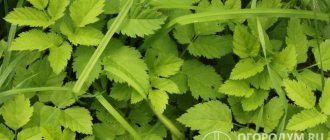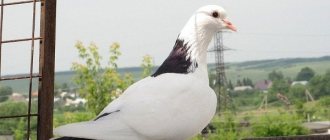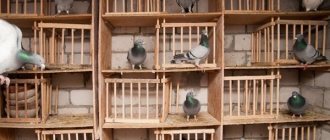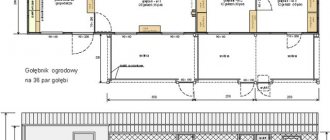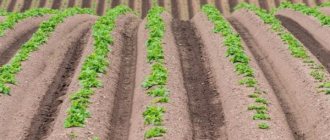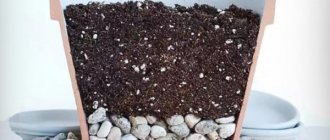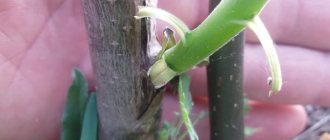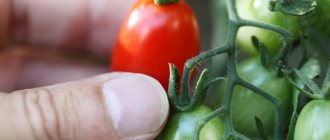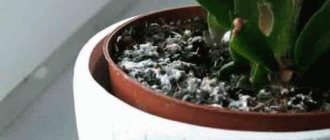Character and characteristics of the bird
street pigeon
Pigeons are small birds that have not lost the ability to fly. The body weight of most breeds, on average, reaches 300 g, the body is oblong, the length is up to 40 cm, the wingspan is no more than 70 cm. The plumage is dense, the color depends on the breed. The wings are wide with pointed tips. The tail is shortened and rounded. The beak is predominantly dark in color. The legs are devoid of feathers, with the exception of some breeds.
Birds are divided into the following types:
- decorative;
- racing or flying;
- meat;
- postal or sports.
crowned pigeon
The division is very conditional, since one breed often belongs to several species. It is known that racing pigeons without daily training for a certain time become decorative.
The ancestors of the pigeons that city residents are accustomed to seeing on the streets are the rock and rock pigeons. It is difficult to determine when people began domesticating these birds, but it has been proven that 5,000 years ago pigeons were painted on ancient Egyptian frescoes. Images have also been found in the southern regions of Europe, in countries located in western Asia. The first specimens of pigeons arrived in the palaces of wealthy nobles after their unique features were noticed. They were unusually good at flying, could return to their nests from long distances, and also had beautiful plumage.
Previously, pigeons were used for courier purposes
The dove is a peace-loving bird. No wonder it has become a symbol of purity and innocence. Birds prefer to live in small flocks. They lead a sedentary lifestyle, but can move the entire colony over short distances in search of food. They are extremely shy, but trusting of humans. They have well-developed hearing and vision, which helps them avoid danger. In their natural habitat, the enemies of pigeons are wolves, foxes, eagle owls and owls, as well as falcons. In city conditions, cats and dogs are dangerous for these birds.
Birds love to rest in clearly visible areas
The pigeon is very gluttonous. From morning to late evening, birds search for food near their habitat. The basis of the diet is plant foods. However, during a hungry period, pigeons do not disdain insects and larvae. The bird's pointed and strong beak allows it to peck fairly hard food - seeds, nuts, grains.
Pair of birds
A pair of doves remain faithful to each other for life. They take very touching care of their other half, together they participate in incubating eggs and taking care of the chicks. Nesting takes place throughout the warm period of the year. As soon as the chicks become independent, the female begins a new clutch, each time refining the nest, consisting of branches, straw, leaves and fluff.
Newborn chicks are completely devoid of feathers, but after a month they are able to fly and get food for themselves.
Bird's-eye
Before you start catching pigeons, you should study their character and habits.
The largest number of bluewings were bred in Central Asia and European countries, where breeders devoted a lot of time and effort to breeding new breeds. Poultry farms in almost all economically developed countries breed purebred pigeons, and outbred pigeons are found all over the planet.
Initially, these birds were bred for meat, but later people were attracted by their ability, like a boomerang, to return to their native nest. This feature of pigeons was used to convey messages.
The phenomenal ability of pigeons to return to their nest was previously used for courier purposes
Pigeon dossier
Newly minted postmen were moved from rural attics to royal palaces. It was in the ceremonial halls of the nobility that the beauty and elegance of birds were truly appreciated. During the postal period, the dove came to be symbolized with love, purity and tenderness. Thanks to the insatiable desire of breeders to improve this species, the world saw wonderful representatives of decorative breeds and postal professionals - racing pigeons with a new flight style that differs from the traditional one.
Compared to other backyard birds, pigeons are distinguished by their relatively small size and ability to fly, which was practically lost in other species due to domestication. In terms of speed, they are record holders among numerous species of birds: postal pigeons can reach speeds of up to 86 km/h, and “retired” pigeons are content with a more moderate result of 60 km/h.
A pigeon can rise to a height of up to 3 km
These birds perfectly recognize the terrain. Near the dovecote, they determine its location by visual beacons, and at large distances they are guided by the Earth’s magnetic field and the location of the celestial body. Even the olfactory organs help birds determine the location of their home. Any bloodhound could envy such a set of qualities: regardless of weather conditions, lighting or topography of the location, they accurately find their nest even from a distance of 1000 m. This ability is surprising, since pigeons practically do not fly and prefer a sedentary lifestyle.
Pigeons can detect infrasound with a frequency of up to 10 Hz
The ability to sense infrasound with a frequency of 10 Hz gives them the ability to sense an upcoming earthquake or thunderstorm. The structure of the eyes allows birds to only selectively see objects during flight.
The pigeon family includes about 300 species of birds. Apart from representatives of ornamental breeds, which are quite different from wild birds, they are very similar to each other both in terms of their exterior and lifestyle.
Decorative pigeons of the Jacobin breed
As a typical representative of this feathered family, you can take the rock pigeon, which is so common in the city. They love to live in close proximity to humans, so their populations are found everywhere in large cities. In a number of countries they are classified as poultry and bred on specialized pigeon farms.
How to catch pigeons
Pigeons can fly more than 3 km
For a long period of time, pigeons coexist peacefully next to people. Birds are not capable of causing harm, except that they can often be carriers of certain infectious diseases that are dangerous to both domestic animals and humans.
Flocks of pigeons prefer areas with a lot of people
Sometimes it becomes necessary to catch a bird that has flown away or is injured. This is not so easy to do, despite their gullibility towards people. However, experienced poultry farmers suggest using very effective methods that require skill and the presence of certain objects.
See also
Description and characteristics of peacock pigeons, diet and breedingRead
Catching with bare hands
Pigeons often feed themselves from a person's hand
One of the simplest fishing methods is with bare hands; it does not require any equipment. Initially, a flock of birds should be fed by scattering treats around them in the form of seeds, nuts or bread crumbs. The pigeons quickly flock and begin to peck at the food. They will act cautiously, then get used to it and come closer.
The favorite place of pigeons is the roofs of houses.
To catch a bird, allow the flock to get as close to you as possible. You need to grab it sharply, but without squeezing its body, trying to avoid damage. You can offer the bird a treat from your hand, scattering food on your palm. The dove will certainly land on your hand, and then you can quickly grab it.
In a box or box
The box should be lightweight
The method will require preparing a light cardboard box, a small stick, rope, strong thread or fishing line. Place the box bottom up, lift one of the sides on a stick to which a thread is tied. You should move a sufficient distance away so as not to frighten the bird, having first laid out the treat for the pigeon in the direction of the box in the form of a path.
Fishing scheme using a box
It is important to catch the moment when the bird goes under the box. At this time you need to pull the thread. This way the bird will be inside. You need to hold the box so that she doesn’t turn it over. Then you can begin to remove the caught specimen. This method is suitable for catching different types of birds.
On a fishing net
The option of fishing with a fishing net is not as simple as it might initially seem. It is better to act together with an assistant. This way you can catch several specimens.
Diagram of a device for fishing with a fishing net
You should approach a flock of birds, trying not to scare them away. Spread the net and position yourself along its edges. Pour food onto its surface and wait for the birds to flock to the treat. When the flock is on the trap, you need to sharply and simultaneously slam the edges of the net and tighten them. Caught birds should be carefully disentangled from the trap, being careful not to injure them.
Catching sleeping birds
It's easier to catch a sleeping bird
Catching a sleeping bird requires dexterity. It is necessary to determine in advance those secluded places where pigeons actively flock in large numbers to roost for the night. Most often such places become attics. Next, you should wait for good, quiet weather and at dusk creep up to the sleeping flock, trying to move carefully and silently. Use your hands, a piece of cloth or a fishing net to quickly catch the nearest bird.
On a loop
To catch with a loop, you need a small piece of fishing line. In places where birds often gather, place one end of the fishing line, tightened like a self-tightening loop. Place food in the center and hide in a shelter, while the loop should be clearly visible.
Fishing with a loop is a convenient and easy way
As soon as the most curious pigeon gets into the very center of the trap, you need to sharply pull the other end of the fishing line. The loop should immediately tighten on one of the paws. Next, you can carefully pull the bird towards you.
See also
Description and characteristics of racing pigeons of the dragon breed, their contentsRead
To the apartment
Birds are attracted to treats in the apartment
An apartment or house often acts as a kind of trap. It is known that these birds can sit on balconies or window sills for hours. You should open the windows and lay some kind of path of crumbs from the place where they are going to bask in the sun to the apartment where the pigeon wants to go of its own free will, attracted by the treat.
Before catching a pigeon in an apartment, you need a net
After this, all that remains is to close the windows tightly so that the bird does not fly back, and at the same time the curtains, because it can break on the glass trying to get out. The next step is to catch the pigeon, which is difficult even in a small room. An ordinary net will help with this.
Why you need to get rid of pigeons
Why get rid of pigeons on the windowsill? These cute birds live next to humans, coo quietly to themselves, and do not require special care. However, harmless creatures only seem so. The main harm to humans comes from pigeon droppings.
Few people would like bird excrement on a clean windowsill or landscaped balcony. But the reason is not only unaesthetic:
- Uric acid in feces corrodes paint and finishing of buildings. The presence of pigeons can cost a pretty penny: there will be additional costs for restoration.
- Sooner or later, all the things on the balcony will be covered in droppings.
- Bird tracks are dangerous for human health: they are a favorable environment for bacteria, viruses, fungi and parasitic organisms.
- Pigeons are known carriers of diseases, including psittacosis, torulosis, histoplasmosis, and encephalitis.
- There are insolent individuals who penetrate directly into apartments through open windows and balconies, fly into the kitchen and rule there, spoiling food. Even the presence of people does not stop them.
If you love birds and feed them, try to handle dirty surfaces carefully so as not to pick up an infection. But even if the birds don’t bother you, be prepared to meet the bewilderment of your neighbors. Country houses and dachas are more suitable for breeding pigeons, rather than city high-rise buildings. Birds, quite obviously, will shit on neighbors’ balconies.
The fight against pigeons is based on scaring them away and creating unfavorable conditions. Don't worry about the birds that you will drive away from their homes. Pigeons take root everywhere; they can easily find a new home.
This is interesting: The main species of birds of prey in Russia: this is educational
How to make a pigeon trap with your own hands
Often the listed methods do not work for a number of reasons. In this case, poultry farmers suggest making a pigeon trap yourself, using available materials and tools. It is important to follow the recommendations.
From the box
The simplest device is a box. Approximate size – 30 x 45 cm. Height – up to 35 cm. You will also need food, weight, a stick and a piece of rope. Part of the bottom should be cut out. This is necessary in order to then freely remove the pigeon from the trap.
Tie one end of the rope to a stick. Use it to lift the box. Place the weight on one edge. When the bird is under the box and begins to peck the food, you need to vigorously pull the free end of the thread. The stick will fall and the dove will be trapped.
Balancing
The box should be placed in places where flocks of pigeons gather
To make a balancing device for catching pigeons you will need:
- lightweight cardboard box with lid;
- plywood;
- stapler;
- wide tape;
- a small piece of cardboard;
- big paperclip.
Pigeons avoid cats
The paperclip needs to be bent in the shape of a horseshoe or the English letter U. It will act as a kind of balancer. Wrap the cardboard around its center and then secure the ends. The hook should rotate freely inside the tube, which is made from a piece of cardboard. Attach the hook to the plywood.
Cut a small hole in the top of the box. Make a recess inside the box. The hook should be located above the edge of this recess. Fix the balancer inside the box on the top side. Outside, pour out a path of feed, which should lead to a recess with a suspended balancer. The bird pushes the balance beam, passing through the depression, ending up in a trap.
Other ways to repel pigeons
Fans of all kinds of gadgets can try special industrial bird repellers. They are divided into:
- Bioacoustic. The devices can operate in manual and automatic mode, which is very convenient for those who spend the whole day at work. Repellers simulate sound vibrations similar to the sounds of birds of prey: eagles, falcons, hawks. A slightly different type of such device is called a “thunder gun”; it imitates the sound of a pistol shot. It's not loud enough to scare the neighbors, but it will definitely scare away the birds. Similar devices equipped with solar panels can even be found in ports and piers to scare away seagulls.
- Ultrasonic. These latest model devices are equipped with infrared sensors to detect approaching birds. They operate on the principle of creating ultra-high frequency sound, which the human ear cannot perceive, but is unbearable for birds and rodents.
- Laser. Such repellers generate a laser beam of the green spectrum, which moves within the home according to a program specified by the electronics. How to scare away pigeons from the balcony with this gadget? All settings have already been configured; the owner will only have to install the device in the desired location and turn it on. Bright colored flashes indoors will frighten the birds outside the window and they will definitely fly away.
How to pick up a pigeon correctly
The bird should not be injured in human hands
You can pick up the pigeon in any way you like, however, in order not to damage it, you should use simple techniques. It is worth immediately noting that you cannot take the bird by one wing or move both limbs behind the back.
Turn your right hand palm up. Spread your ring and index fingers apart. You need to pass the pigeon's feet through them. His head should be facing you. The thumb will be over the bird's wing. The left hand can be used for additional support.
Expert opinion
Zarechny Maxim Valerievich
Agronomist with 12 years of experience. Our best country expert.
Ask a Question
This is the safest and most convenient fixation. In addition, this position will avoid contamination with pigeon excrement.
What to do if a pigeon was injured during the catching process?
An inexperienced catcher may accidentally injure a defenseless bird. Most often, injury occurs due to:
- Sudden collisions and a pigeon hitting a hard surface.
- Catching a bird by its limbs or wings.
- Using fishing line for fishing.
If necessary, organize emergency care for a wounded bird to avoid atrophy of the damaged limb. Even with a minor fracture or dislocation, give the injured part of the body a natural position and seek help from a veterinarian .
If the pigeon was caught not on the street, but in a special pigeon coop, it is placed in a separate cage. There is a risk of attack by healthy relatives. The broken limb is treated with a disinfectant, and then a fixing bandage is applied.
How to catch a pigeon: photo
Where to look for a flighted domestic pigeon
Initially, when the bird is still young, it is accustomed to its dovecote. The flock should return in full force to its nest after the walk. To do this, the owner of the dovecote accustoms them to food and drink in a certain mode, a sound signal (for example, a whistle), and the light of a flashlight in the evening. The young are gradually taught to follow the leader of the pack. All completed commands are rewarded with food. Without basic skills, you cannot release birds - they may get lost.
If the pigeon flies away, there is no need to panic. He will return if he remembers the way. Otherwise, you should look for it close to home, in flocks of street pigeons.
What to poison
Since pigeons are constantly fed and pitied, so many of them have bred that dangerous diseases have begun to spread among people, and bird populations have to be controlled.
Lead
The heavy metal gradually accumulates in the body, and the pigeons do not die immediately. To get rid of birds rummaging in garbage pits, lead is mixed with grain or poured into water.
Wood sawdust
Silver metal is also dangerous for humans. In order not to use protective equipment when preparing poison for pigeons, sawdust is added to the feed, which swells in the bird’s crop.
Potassium permanganate solution
At home, a spoonful of potassium permanganate crystals is stirred in half a glass of water. A dark purple liquid is added to the food; the pigeon dies very quickly from such a treat.
"Diazinon"
The veterinary pharmacy sells a drug that kills insects that bother cows. The instructions tell you how to prepare poison for pigeons from Diazinon.
Disinfectants
Chemicals used to disinfect premises and kill germs serve as poison for birds in large doses.
Salt
If you feed pigeons by mixing grain with so much sodium chloride, their organs stop working and the birds quickly die. Just a few crystals of table salt added to food pose a mortal danger to pigeons.
Herbicides
Organophosphorus compounds, which are used to control weeds, cause hormonal changes in birds, which leads to their death.
Poisonous gases
Pigeons that live in ventilation can become poisoned if there is a malfunction in the heating system of the house. Birds lose their appetite and suffer from convulsions after inhaling carbon monoxide. Even a small dose causes death in birds.
Catching a sleepy bird
The simplest method of catching birds is to hunt pigeons while they sleep. To do this, you need to determine the exact location of the birds' roosting.
The most common place where birds prefer to sleep is the attic of a residential building or abandoned building. Wait until dark and take a flashlight with you, and then quietly make your way to your overnight stay. In the article “How a Pigeon Sleeps” we talk in detail about its behavior at night.
Next, you need to carefully direct the beam of light at the birds and select a suitable bird. Without making unnecessary sounds, carefully approach the pigeon and sharply grab it by the paw, squeezing it lightly in your hand.
You need to hold the bird tightly, because at this moment it will wake up and want to break free. You need to take into account that the lighting should not be very bright, because the pigeons will wake up and nothing will work out for you.
We talked about the safest and most effective methods of catching birds. Send this information to your friends.
If you would like to share your thoughts, we invite you to comment below.
0
Alternative Methods
When none of the methods help, you have to resort to serious measures. They may seem very cruel to many, but a person must also protect his home, especially if it is damaged. Such actions include the following:
- only a nest that has been made can be thrown from the balcony;
- if the birds have already laid eggs, they are often replaced with dummies, for example, pebbles of the same diameter or pieces of other materials.
These methods of scaring away pigeons from the balcony are not the worst. Often people resort to using Diazinon. This is a special substance related to insecticides. After the pigeons eat the poisoned food, they will die. In this case, their relatives never fly to such places. Drugs such as Granozan, potassium permanganate, and nicotine sulfate can also be used.
The grain is treated with poison and poured into places where birds fly. Sawdust, which can swell in the stomach, can also be added to the food. The window sill is treated with nicotine sulfate. These methods will help keep pigeons away from the balcony forever.
Pigeons balcony what to do
A simple and effective METHOD OF PROTECTION FROM PIGEONS on the balcony
How to scare away pigeons - means and their use
The use of drugs is a very cruel method, so it is better to use more gentle ones, because pigeons are just birds, they are guided by the instinct of self-preservation and survival, so it is better to scare them away using simple methods. The most reliable way to permanently help get rid of birds on the roof of your house and in other places is to use sound devices. The sound is very unpleasant for the birds and they fly back.
Residents of the high-rise building are already accustomed to visits from birds and are trying to be gentle with them. It is possible to get rid of pigeons, as well as other birds, using modern methods, forgetting about the constant failures when using outdated ones.
Wooden box for birds
Since catching a pigeon on the street is not so easy, you can consider another option - building a wooden box covered with nylon mesh. The latter is necessary so that birds can observe what is happening around them and enter the trap with less fear.
Apart from this, you will also need a small stick tied on one side with a long rope. After this, you need to turn the box over and slightly lift one of its sides, fixing it with a stick. Near the wooden structure you need to scatter a little fertilizer, and under the trap itself you need to put the bulk of crumbs and grain.
There should also be enough food near the wall that is in contact with the surface of the earth (asphalt). Hold on to the free end of the rope, move away and wait. When the pigeon approaches the far wall of the structure, then pull the rope with a sharp movement. At this time, the wand will fly out from under the box, and it will cover the bird.
After this, go to the structure and secure the box on top so that the bird does not turn it over. Now carefully remove the caught specimen.
Comparison table of the best pigeon repellers
| Name | Type | How to use | Price |
| Bird repellent gel | Chemical repellents | “Liquid nails”, leave a strip on the eaves, roof | 2200 rub. |
| Net | Net | As a barrier - fix it on the balcony, cover the beds, etc. | 220 rub. |
| Anti-landing spikes | Spikes | For protecting fences and gates | 170 rub. |
| Fi-Shock EAC10A-FS Super 525 Energizer | Electric fence | As a barrier in areas where birds are active | ~$29.99. |
| Orbit 62100 Yard Enforcer Motion Activated Sprinkler | Water repeller with motion sensor | Connect to water and install on a personal plot, positioned opposite the protected object | $45.30 |
| Bird-X Liquid Deterrent | Chemical repellents | Dilute with water and spray on open areas: lawns, roofs, lawns, etc. | $91.48 |
Poison for pigeons: is it worth using?
The most radical way to combat pests is physical destruction. However, before acting, it is necessary to clarify two issues: legal and sanitary-hygienic. Although pigeons are not a protected species, check your state's laws. If there is no ban on killing pigeons, you need to decide how to do it safely.
It may be worth contacting a specialist service, as toxicants registered for pigeon control are only available to professionals. For example, the DRC-1339 tool may only be used by USDA APHIS-Wildlife Services employees or persons working under its supervision. Avitrol, one of the most effective pesticides, is also limited in use.
– In order to obtain approval for Avitrol, you must adequately describe in your application how you will protect “non-target” birds from accidental poisoning. Be prepared to scare away all such birds that come to feed, even if you scare away the pigeons along with them. Their protection is your responsibility. When using Avitrol or any similar products, special teams must be working to collect dead birds, explains William H. Kern of Florida State University.
When looking for poison for pigeons, we must not forget that domestic pets can also become innocent victims, so it is advisable to use toxicants only away from residential spaces - on economic or agricultural sites.
– The use of repellents and poisons as part of a bird control program requires great attention to detail. Follow all product instructions and don't skimp on them; doing so may be dangerous or unhelpful, warn Robert A. Pierce and Kevin McGrath of the University of Missouri.
New developments
This product is not yet available, but the idea itself certainly deserves attention. To easily change the angle of the eaves and make the area unsuitable for nesting, you can use a polycarbonate slope plate from BirdBarrier. The plate is sold in two colors (beige and gray). The base of the plate is glued or screwed to any “L”-shaped protrusion, like a cornice, beam or decorative element. The lack of a flat surface will force the birds to look for a new home.
